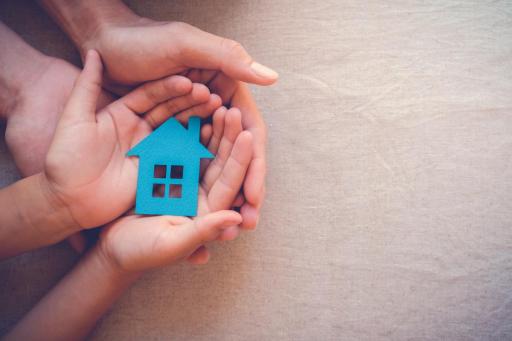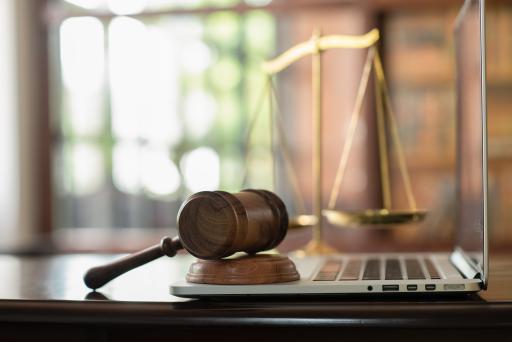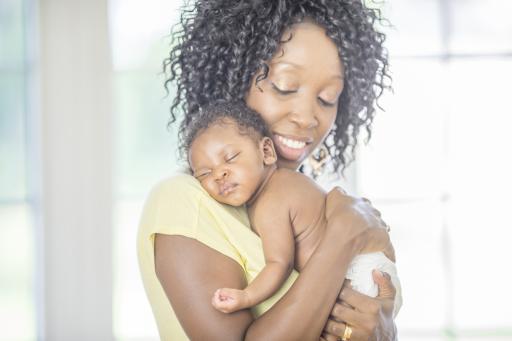Funders of all varieties find value in civil legal services
Access to justice, and access to a lawyer in particular, is universally good for our communities. Many funders in Ohio see the value in civil legal services as well. In fact, 43 Philanthropy Ohio members gave to legal aid in 2020, a remarkable show of support.

I consider myself fortunate that my career led me to a place where I have a front row seat to the lasting impact that having access to a lawyer can make in the lives of low-income Ohioans. It is clear that I am not the only one, as many funders in Ohio see the value in civil legal services as well. In fact, 43 Philanthropy Ohio members gave to legal aid in 2020, a remarkable show of support.
Some funders with a focus on children recognize how access to lawyer as part of a multidisciplinary team improves educational outcomes and, as a result, fund legal aid. Some funders with a focus on improved health outcomes recognize that medical legal partnerships provide a new pathway to improved overall health outcomes and fund legal aid. Some funders with a focus on community or economic development see that including legal aid in local partnerships adds value and strengthens communities, and fund legal aid. The examples go on and on and tell the same story: access to justice, and access to a lawyer in particular, is universally good for our communities.
In 2020, nonprofit civil legal aid providers were on the front lines supporting Ohioans in need. Ohio’s legal aids opened 54,833 cases and served 124,830 Ohioans. Additionally, we were fortunate to have Ohio Legal Help, an online legal information website and portal that launched at the end of 2019. In 2020, when so many needed to seek guidance from the safety of their homes, Ohio Legal Help responded with real-time updates on legal issues related to the pandemic and provided legal information and referrals to more than 330,000 Ohioans. In addition to their normal workload, Ohio’s legal aids and Ohio Legal Help stepped up to the challenge and served 58,539 Ohioans specifically with COVID-19 related legal issues. As a result of legal advocacy, legal aid attorneys increased income and assets for Ohio families by nearly $7.8 million, which provided essential funds in a year when so many experienced increased poverty.

Legal aid organizations statewide saw an increase in the number of individuals requesting assistance with housing issues in 2020. This need for housing services grew as the year wore on, with 41% more requests in the second half of 2020 compared to the first half. Assistance with unemployment compensation issues drastically increased, with 608% more cases opened in 2020 compared to 2019. Health care-related legal problems were also prevalent, with 4,747 Ohioans receiving services for health-related legal issues.
In an effort to create new pathways to reach clients isolated in their homes, legal aid embraced technology widely accessible by low-income Ohioans – social media. One common model utilized was “Ask a Lawyer” segments on Facebook Live. In these live streaming sessions, legal aid attorneys provided critical legal information and answered live audience questions through the comment feature. By the end of 2020, one legal aid organization had offered 36 live sessions with over 39,600 views!

One way in which civil legal aid can help communities is in their ability to build relationships and advance systemic solutions. When Ohio’s unemployment system was overburdened in 2020, it caused hardship for people who had a valid claim for benefits, but who could not get through the system or ended up wrongly flagged as a fraudulent claim. Because Ohio’s legal aids have handled unemployment cases for years, they have lasting relationships with the staff at ODJFS. Our legal aid lawyers were able to expedite resolution of meritorious claims and provide feedback and suggestions for addressing glitches that were causing hardships. Professional relationships like these can only be built and maintained by well-funded, professional nonprofit legal service providers. We are lucky to have these organizations in Ohio.
Over the last few decades, the value and impact of civil legal assistance has caught the eye of others in the “helping” professions and essential partnerships have developed. It is now common in Ohio to find medical providers collaborating with civil legal aid organizations in Medical Legal Partnerships (MLPs) which put lawyers in medical facilities. A lawyer’s role in a MLP is to be accessible by both the medical professionals and their patients and offer legal solutions to the problems causing medical distress. One example of the value of an MLP can be seen when a mother brings her child into the doctor because his asthma has worsened. The doctor treats the asthma but cannot stop the source of the irritation, which is mold in the apartment. The doctor takes the family to see the legal aid lawyer who can address the mold in the apartment, eliminating the problem at its root.

A colleague often says that the best thing you can do to help a young mother achieve better birth outcomes is to give her a lawyer. It doesn’t matter if her issue is potential eviction, wage theft, accessing appropriate educational supports for her child, challenging a wrongly denied unemployment claim, escaping an abusive relationship, or worrying about her partner’s impending deportation; all of these issues cause stress and diminish birth outcomes, and all of these issues have a legal solution.
For years, Ohio’s philanthropic community has supported Ohio’s civil legal service providers. This has resulted in strong and professional organizations that stepped up when we needed them most. As philanthropic professionals, I encourage you to reach out to your local civil legal service nonprofits. Talk with them about the focus areas you care about and ask them to identify if there is a way for civil legal services to support that work. Legal aid can improve outcomes in everything from a child’s school success to a mother’s birth outcomes, and odds are that there is a legal solution to the problems you face. Additionally, we at the Ohio Access to Justice Foundation are always happy to brainstorm and collaborate on innovative projects supporting access to justice.
Thank you for you strong support of civil legal services this year and keep up the good work!
Camille R. Gill, Esq.
Programs and Grants Counsel
Ohio Access to Justice Foundation
Philanthropy Ohio’s blog is meant purely for informative discussion of topics, practices and viewpoints in philanthropy. We collaborate with various members, funders, consultants, philanthropy-serving organizations and Professional Partners to bring you quality content. Guest authors are partners in our collective vision for a just and vibrant Ohio through impactful philanthropy. Statements on this blog reflect the author’s personal opinions and do not necessarily fully represent the opinions, policies, practices, values and mission of Philanthropy Ohio. This blog may contain testimonials, opinions and real-life experiences of members. However, the experiences are personal to those particular members, and may not necessarily be representative of all members or of Philanthropy Ohio.